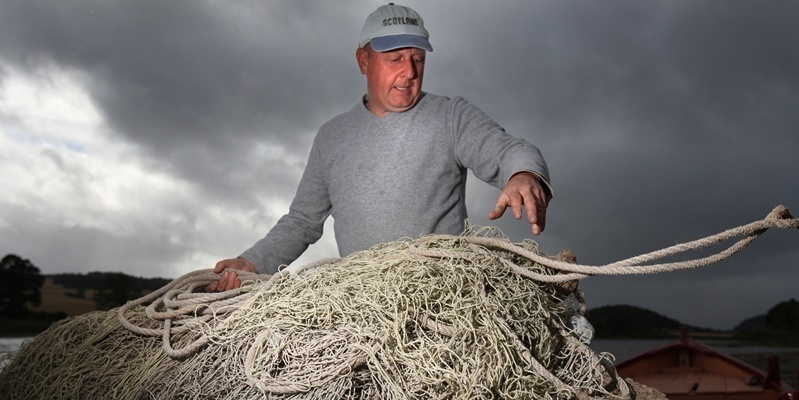Two decades after it was stopped, salmon netting has returned to the River Tay.
However, before fishermen dust off their equipment, the strict rules regarding netting have only been relaxed as part of a tag and release programme to monitor stocks.
The only people who will be allowed to use nets on the stretch of the water near Kinfauns are volunteers participating in the project, led by the Tay District Salmon Fisheries Board.
To establish the link between salmon numbers and rod catches, the Almondbank organisation is conducting a study over the next few weeks.
The fish will be tagged at the point of entry to the river before being released and anglers will then be asked to report any tagged salmon they catch.
They should take a note of the tag number and report it to the Tay Foundation or fisheries board on 01738 583733.
The board also asks that, where possible, these fish are released to see if they are caught again.
A similar study takes place every year on the River Tweed and has revealed that fewer than 10% of fish are recaptured, although the amount caught has increased since the 1990s when netting stopped on the Tay.
Among the few to re-familiarise themselves with the lost art is David Gardiner, who has 30 years” fishing experience and works for Tay Salmon Fishery Company, which is playing a pivotal role in the project.
He told The Courier this week: “Because of my experience, I was approached to help out with this project as most anglers these days are only used to fishing with rods.
“We have just started work on this and have already had two or three days out on the river trying to catch some fish.”
He added: “So far we”ve only caught a couple as the bottom of the river is quite clogged up with weeds and debris, but hopefully this will get cleared over time.
“We are gradually getting places cleaned out with the nets, so we should start picking up a bit more fish.”
There are plans to carry out the netting programme until a couple of weeks before the rod season ends in October, to give anglers the chance to catch the tagged fish and report them.
This will then provide information on how many salmon are being caught on the river and how far they have travelled.
However Mr Gardiner said that the time given to the fisheries board to complete their project has been limited due to the arduous process of gaining permission from the proper authorities.
He said: “Ideally we should have started this in June or July, but by the time we were given permission and had the necessary paperwork sorted it was getting on for the end of August.
“If it is decided to repeat this next season, we should be a bit more organised and will be able to get going earlier. Obviously, I would be quite keen to be a part of that and help the board out.”
Salmon fishing has long been important to the Tay. For over 500 years the fish were caught using a net and coble before being exported across the world.
However, the latter part of the 19th century was characterised by increasing anti-netting sentiment among landowners.
The fisheries company was established in 1899 to control the practice by buying up fishing rights along the estuary and sea coast.
Netting continued for nearly another 100 years until salmon numbers began to fall.
In 1996 the last of the fisheries company nets ceased operating when the Tay Foundation obtained a 99-year lease of the net fishings.
